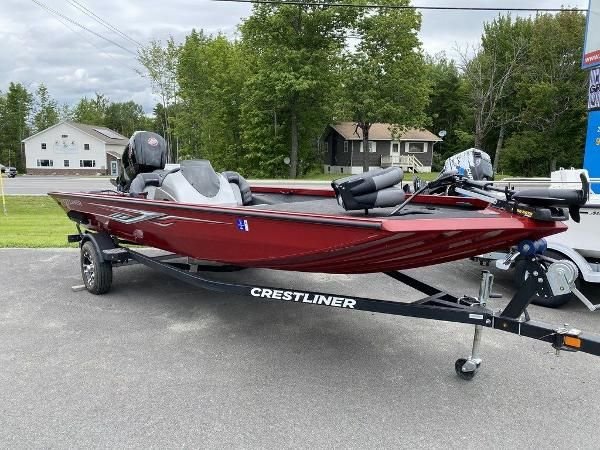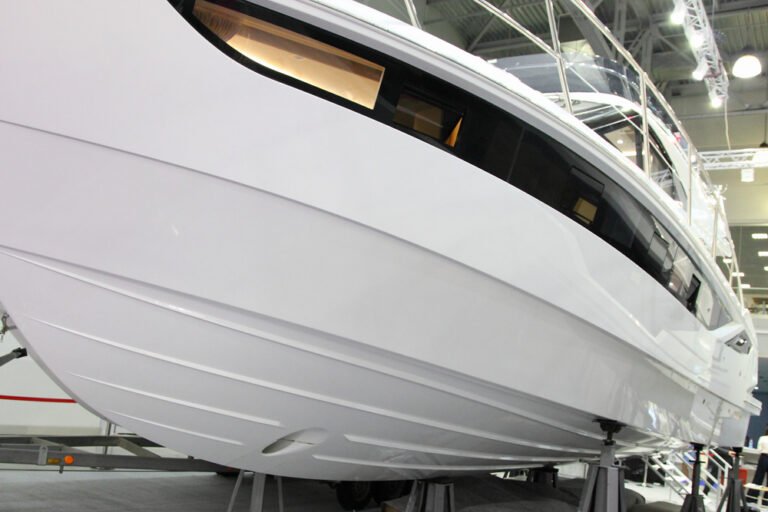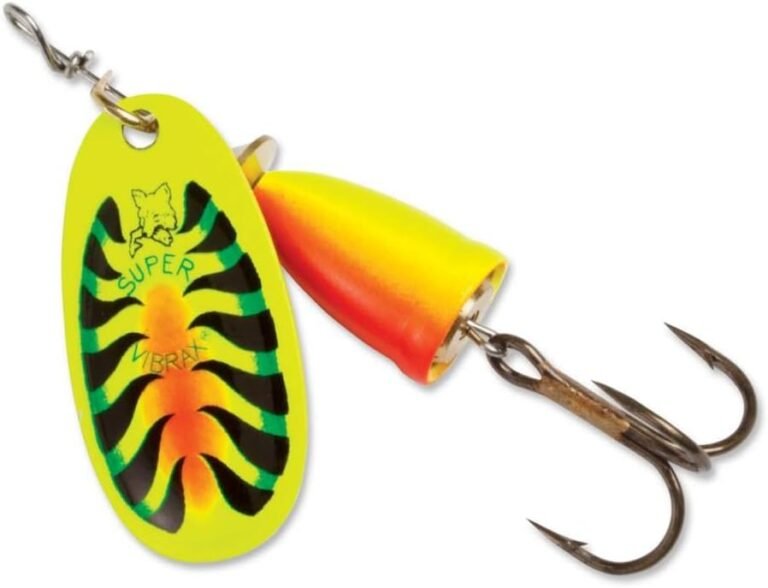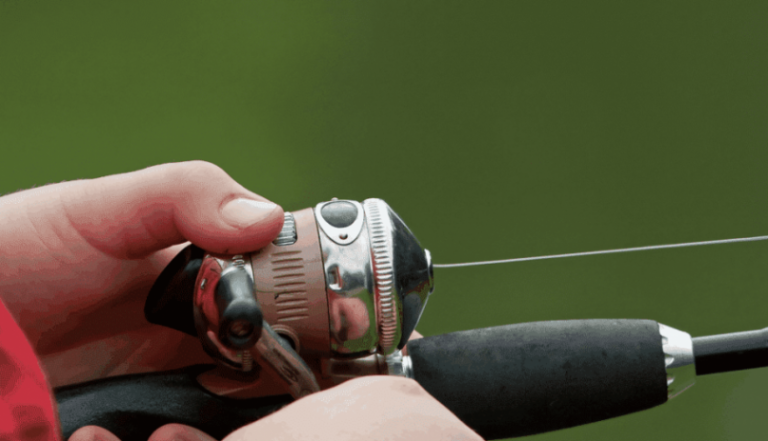When it comes to bass fishing, selecting the best bass fishing rod is crucial in optimizing your fishing experience. In the vast fishing rods market, two main types dominate: spinning rods and casting rods. Let’s get to it!

Spinning rods are one of the most versatile options and are ideal for beginners and anglers who prefer finesse techniques. These rods have a fixed reel seat underneath the rod, allowing easy casting and smooth retrieval.
On the other hand, casting rods are known for their precision and accuracy. They feature a trigger grip and a reel seat on the rod, enabling anglers to cast heavy lures with greater control and distance.
Fly rods use a weight-forward line system to propel lightweight flies towards their target. Although less common in bass fishing due to their specialized techniques, fly fishing enthusiasts can still enjoy targeting larger bass using specially designed fly fishing gear.
Key features to consider when choosing a bass fishing rod
Selecting the right bass fishing rod involves considering several key features that will greatly impact your overall performance on the water. The first important consideration is length and action. Length determines how far you can cast, while action refers to how much the rod bends when pressure is applied at its tip or throughout its length.
Longer rods typically provide more casting distance, while shorter ones offer better accuracy in tight spaces. Action can range from slow (bending throughout) to fast (bending mostly at the tip).
The choice depends on your preferred technique and sensitivity requirements. Another crucial feature is power or line weight rating, corresponding to how much weight or force a specific rod can handle without breaking or compromising its performance.
Power ratings range from ultra-light to heavy, with medium power being the most common for bass fishing. Lighter rods are suitable for finesse techniques, while heavier ones are ideal for handling larger baits and bigger fish.
Matching the power of your rod to the weight of your line and lures will ensure optimal performance. The material and construction of the rod play a significant role in its overall quality.
Graphite rods offer excellent sensitivity, making detecting subtle strikes from bass easier. Fiberglass rods, on the other hand, offer greater durability and flexibility, making them more forgiving when battling big fish or casting heavy lures.
Many modern rods combine graphite and fiberglass elements to provide a balanced blend of sensitivity and strength. By carefully considering these features when choosing a bass fishing rod, you can enhance your angling experience and increase your chances of success on the water.
Types of Bass Fishing Rods Based on Techniques Used
Crankbait Rods
Crankbait fishing is a popular technique anglers use to target bass in various water conditions. To effectively utilize this technique, anglers rely on specialized crankbait rods designed with specific characteristics.
One key characteristic of crankbait rods is their moderate action, which allows for better lure control. This means that the rod has a balanced level of flexibility and stiffness, enabling anglers to impart the desired action to the crankbait.
Moderate action also helps prevent the hooks from tearing out during aggressive strikes. In addition to their action, crankbait rods are slightly longer than other bass fishing rods.
This increased length, usually between 7 and 8 feet, enhances casting distance. Longer casts are crucial when targeting bass hidden in deeper waters or around submerged structures.
Moreover, the length provides better leverage for hooksets at a distance. These rods possess medium-heavy power to handle larger-sized lures commonly used in crankbait fishing.
The power rating determines how much force is required to flex the rod while casting or fighting fish. Medium-heavy power ensures that anglers can maneuver and control larger crankbaits without compromising sensitivity.
The construction material of choice for most crankbait rods is fiberglass due to its unique properties. Fiberglass offers excellent flex and shock absorption capabilities necessary for combating aggressive strikes from bass while minimizing the risk of line breakage or lure damage.
Jigging Rods
Jigging is another popular technique utilized by bass anglers to entice strikes from lethargic fish or those hiding in heavy cover. Jigging rods are specifically designed with characteristics that optimize this method.
One crucial attribute of jigging rods is their fast or extra-fast action, which translates into quick hooksets. Jig bites can be subtle, and a fast action rod ensures that the angler can promptly detect and respond to these delicate strikes.
This quick response is vital to increase hook-up ratios. Jigging rods also possess medium-heavy or heavy power to handle the weight of heavy jigs commonly used in this technique.
The power rating ensures the rod has sufficient backbone and strength to effectively work the jig through the cover and maintain control during aggressive hooksets. Most jigging rods are constructed using graphite or composite materials to enhance sensitivity.
Graphite, renowned for its lightweight and high modulus properties, allows anglers to detect even the slightest changes in bottom structure or fish activity. The increased sensitivity enables precise lure placement and enhances fishing success when using jigs.
Drop Shot Rods
Drop shot fishing is a finesse technique often employed when bass are finicky or holding in deeper waters. Drop shot rods are specifically designed to accommodate the unique requirements of this technique.
Light or medium-light power with fast action is a characteristic feature of drop shot rods. These power ratings ensure that these rods have enough flexibility to provide an optimal presentation while maintaining control over light line weights typically used in drop shot fishing.
Another critical aspect of drop shot rods is their sensitive tip, which detects subtle bites. This sensitive tip allows anglers to feel even the slightest movements or nibbles from bass as they interact with the drop shot rig.
Accurately perceiving these delicate bites increases angler response time, improving hook-up rates. Drop shot rods predominantly utilize graphite construction to enhance sensitivity due to its excellent transmission properties.
Graphite construction aids in transmitting vibrations throughout the rod blank, ultimately allowing anglers to distinguish between bottom composition changes and potential fish interactions more effectively. By understanding the specific characteristics and designs required for crankbait fishing, jigging techniques, and drop shot setups, anglers can select the appropriate bass fishing rod to optimize their chances of success in different scenarios.
Specialized Features in Bass Fishing Rods
Handle Design
The handle design of a bass fishing rod plays a crucial role in providing comfort, control, and sensitivity to anglers. Two popular options for handle materials are EVA foam and cork. EVA foam handles are made from ethylene-vinyl acetate, a lightweight and durable material known for its cushioning properties.
These handles provide excellent grip even when wet, ensuring a secure hold during intense battles with feisty bass. Additionally, EVA foam handles offer enhanced shock absorption, reducing fatigue on long fishing trips.
On the other hand, cork handles have been favored by traditional anglers for their classic look and exceptional sensitivity. Cork is a natural material that provides a comfortable grip while transmitting subtle vibrations from the rod tip to the angler’s hand with remarkable clarity.
This allows fishermen to detect even the slightest nibble or movement underwater. Cork handles are more aesthetically appealing and can add elegance to your fishing gear.
Overall, both EVA foam and cork handles have their advantages. The choice between them ultimately comes down to personal preference, with some anglers prioritizing comfort and durability (EVA foam), while others value sensitivity and aesthetics (cork).
Conclusion
Selecting the best bass fishing rod involves carefully considering factors such as length, action, power, line weight rating, material construction, specialized techniques for bass fishing like crankbaiting or drop shooting rods, and specialized features like handle design. When choosing between EVA foam and cork handles for your rod handle, design preference takes center stage; do you prefer the durability and comfort of EVA foam or the classic feel and enhanced sensitivity of cork?
Selecting the right bass fishing rod tailored to your specific needs will greatly enhance your overall fishing experience and increase your chances of landing that trophy bass. So, invest time researching and testing different rod options to find the perfect match for your angling style.
With the right rod in hand, you’ll be well-equipped to face any bass fishing challenge and enjoy the thrilling pursuit of this magnificent species. Happy fishing!






